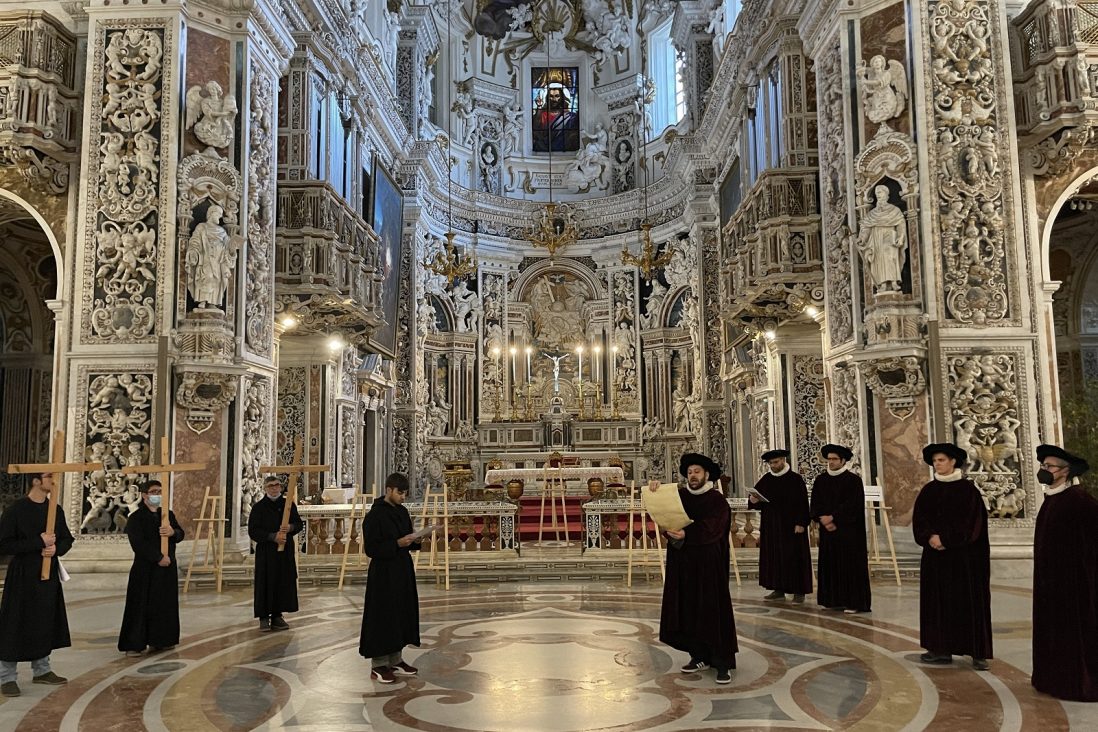“The Light of the Martyrs”

The side chapel of the Holy Confessors inside the baroque church of the Gesù at Casa Professa has an altarpiece dedicated to Paul Miki, John Soan of Goto, and James Kisai, three Japanese Jesuit martyrs. To celebrate this historical memoir last December 3 a drama entitled “The Light of the Martyrs” took place in the beautiful, refined baroque setting of the church of Casa Professa. This event was organized together with the Jesuit community of Gonzaga Campus.
Directed by Prof. Giovanni Isgrò, professor of theatre history and entertainment, historian and expert in Jesuit sacred dramaturgy, this artistic and cultural event is part of the worldwide celebrations of the Ignatian Year, which is also being exhibited in the Church of the Gesù of Casa Professa.
“In particular, it recounts the Jesuit adventure in Japan, which began precisely with these first three Japanese martyrs – Isgrò explains – crucified along with 23 other Christians. ‘The light of the martyrs’ is a road, a way that indicates the value of faith, with a few pre-theatrical inputs, explaining the meaning of this martyrdom. The performance is portrayed in the style of Jesuit dramaturgy. Today it is the backbone of the dramaturgical dynamics of the modern age.
In a few particularly intense and expressive scenes, the actors masterfully brought to life the drama of the death of the three fathers crucified and pierced by two spears. The entrance of the senate of Palermo was very impressive who, after being very impressed by their death, called upon the Society of Jesus, to communicate that they would name the three Jesuit fathers co-patrons of the city of Palermo. Finally a very long elegant golden drape gives glory to the three martyrs, showing how life is born out of death in the eternal glory of the Church.
Paul Miki, John Soan, and James Kisai were killed in 1597 in Nagasaki. From that moment onwards the persecutions perpetrated against Christians began, which, after a brief pause, resumed in 1614 to end in 1639 with the expulsion of all religious and the closing down for about two centuries, of Japanese relations with the Western world.
After the canonization of St. Ignatius of Loyola and St. Francis Xavier and the miracle of the avoidance of the plague in Palermo in 1625, which was celebrated together with the first great feast in honor of Santa Rosalia, the Senate of Palermo, conscious of the sacrifice of the three Japanese Jesuits, decided to proclaim these first three martyrs co-patrons of the city along with St. Rosalia, St. Agatha, St. Ninfa and St. Cristina.
“It is very significant for us, to reconnect profoundly with our roots in this way – the Jesuit Fr. Gianni Notari, president of the Gonzaga Campus Board of Directors said – We Jesuits today are living the present time precisely because of the commitment and witness of all those who have preceded us. Therefore, we wanted to offer the city a public testimony of the Jesuits’ action starting from these testimonies that shed light on our commitment today.”
